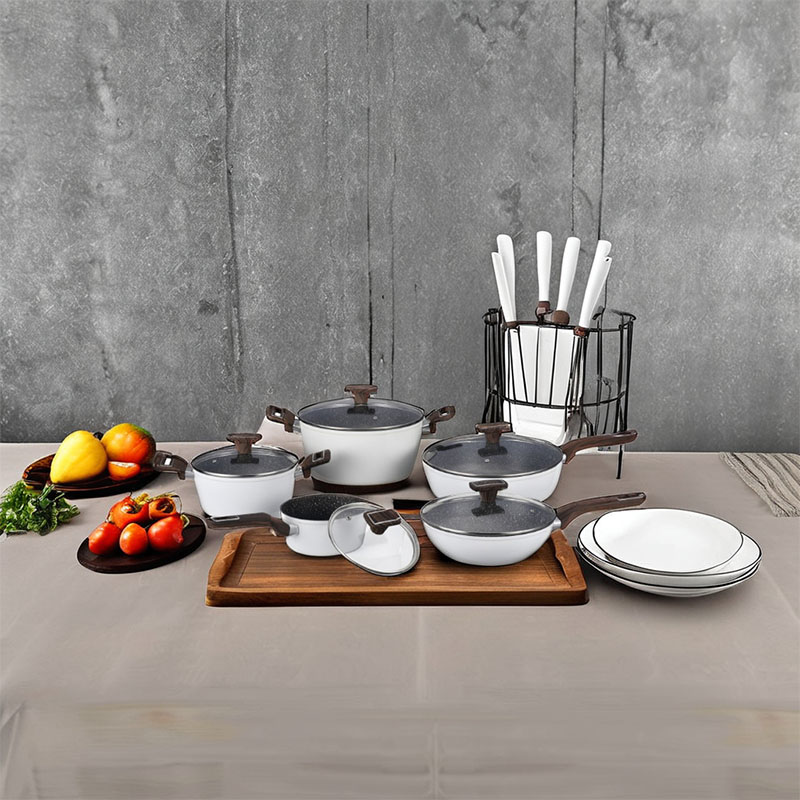
Amid rising public health awareness, the safety of kitchenware has shifted from an afterthought to a core criterion for shoppers. Among everyday tools, non-stick pans take center stage, since their coated surfaces can harbor substances that many consumers now scrutinize. Shoppers want clear answers about the safety of the chemicals that allow their eggs to glide effortlessly. As a result, brands that enhance the safety and eco-friendliness of their non-stick solutions now set the pace for the entire category, making coating transparency a competitive frontline.
Once, users accepted non-stick technology as a kitchen gift without a second glance. That loyalty waned when scientific studies surfaced, connecting certain materials to measurable health concerns. PFOA was a case in point: the ubiquitous chemical delivered outstanding performance until investigators linked it to subtle, but measurable, human and environmental harm.
Today's shoppers have passed a new threshold of vigilance regarding their kitchen gear, with a particular spotlight on the non-toxic credentials of non-stick pans. Beyond simple convenience, buyers now demand that the pans they depend on daily be free of substances like PFOA, PFOS, and BPA, all of which have stirred mistrust after being linked to harmful airborne or leached contaminants.
Manufacturers are meeting this demand head-on.
1. Emphasizing PFOA-Free Manufacturing
Most leading non-stick brands now proudly label their products as free of PFOA, the chemical once predominant in every non-stick production line. Outcry over its molecular legacy triggered a comprehensive industry pivot, and while major names pledged early to ban its use, many shoppers remained wary. Marketers have consequently embedded the "PFOA-free" phrasing into the very identity of new lines, coupling it with clear icons and charts.
2. Forging Coatings from Safer, Renewable Bases
The journey to consumer trust doesn't stop with PFOA release. Cutting-edge lines are now leaping into coatings crafted from strictly non-toxic and sustainably sourced materials. One rapid winner is a reinforced ceramic approach that eliminates perchlorate ions and copper ions altogether. Ceramic coatings not only provide excellent non-stick properties but also release no harmful chemicals, further meeting consumer demand for green products.
3. Provide Transparent Product Information
Today's shoppers want clarity on what to put in their kitchens, particularly when it comes to non-stick cookware. To meet this expectation, producers must disclose full ingredient and sourcing details. Leading labels now highlight assurances like "PFOA-free" and "non-toxic coating" right on the box and on their websites, so the safety credentials are immediately visible.
A growing number of brands also pursue third-party audits that validate these claims against global benchmarks. Endorsements from bodies like LFGB, FDA, and SGS let consumers verify that independent tests back the marketing language, locking in confidence and fostering long-term loyalty.
4. Improve Production Processes
Enhancing safety and lifespan goes beyond ingredient choice; it also demands smarter manufacturing. Firms are recalibrating the application technique and adjusting thickness to achieve the ideal balance. A well-optimized coating lays down a uniform, dense layer that delivers superior release while resisting chips and cracks, therefore securing the non-stick surface long into the product's life.
Even pans coated with non-toxic materials can sustain harm if subjected to the wrong treatment. This not only shortens the product's life but may also compromise its safe use. To guide shoppers in the successful care of their non-stick cookware, many brands now print step-by-step guidelines right on the box.
Provide Clear Instructions, increasing consumer concern for health and the environment, non-stick pan manufacturers are facing increasingly stringent standards. Non-toxic coatings are no longer an option but have become a key consideration for consumers when purchasing non-stick pans. To meet these demands, non-stick pan manufacturers must continuously innovate to stand out in this competitive market.



 Español
Español عربى
عربى

